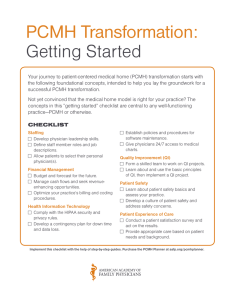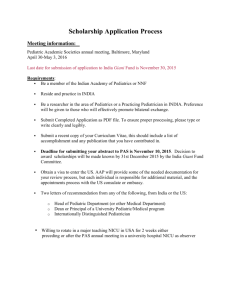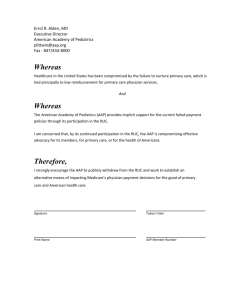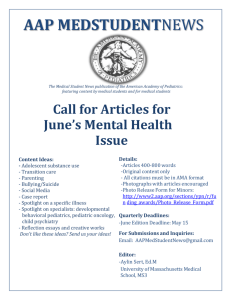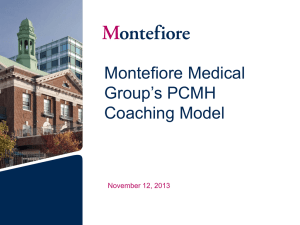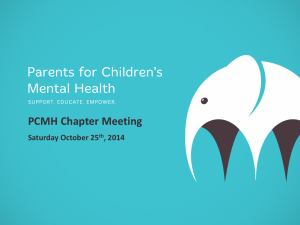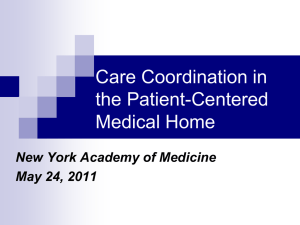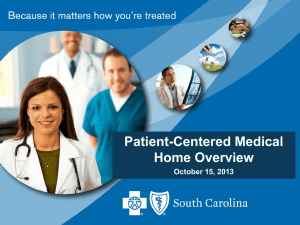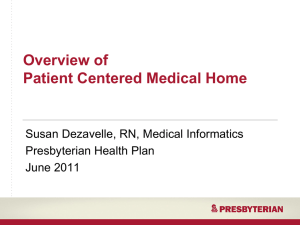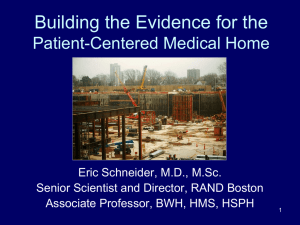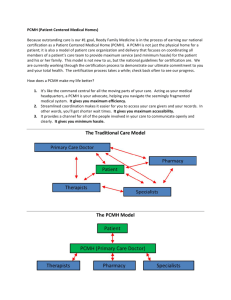here - Association of Maternal & Child Health Programs
advertisement
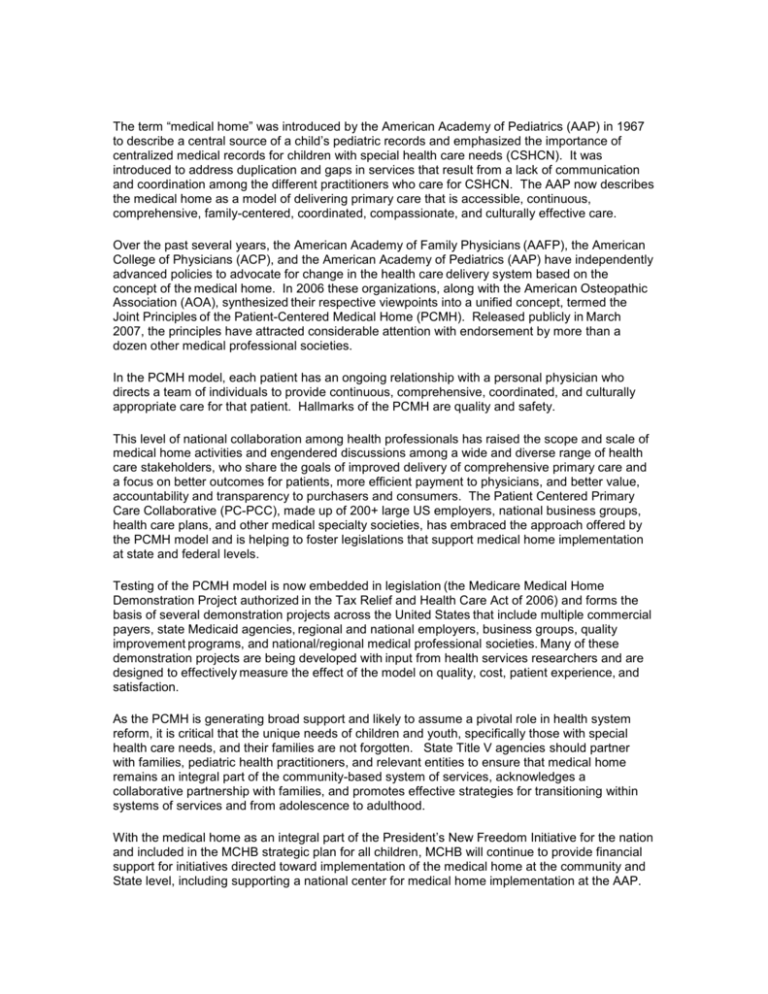
The term “medical home” was introduced by the American Academy of Pediatrics (AAP) in 1967 to describe a central source of a child’s pediatric records and emphasized the importance of centralized medical records for children with special health care needs (CSHCN). It was introduced to address duplication and gaps in services that result from a lack of communication and coordination among the different practitioners who care for CSHCN. The AAP now describes the medical home as a model of delivering primary care that is accessible, continuous, comprehensive, family-centered, coordinated, compassionate, and culturally effective care. Over the past several years, the American Academy of Family Physicians (AAFP), the American College of Physicians (ACP), and the American Academy of Pediatrics (AAP) have independently advanced policies to advocate for change in the health care delivery system based on the concept of the medical home. In 2006 these organizations, along with the American Osteopathic Association (AOA), synthesized their respective viewpoints into a unified concept, termed the Joint Principles of the Patient-Centered Medical Home (PCMH). Released publicly in March 2007, the principles have attracted considerable attention with endorsement by more than a dozen other medical professional societies. In the PCMH model, each patient has an ongoing relationship with a personal physician who directs a team of individuals to provide continuous, comprehensive, coordinated, and culturally appropriate care for that patient. Hallmarks of the PCMH are quality and safety. This level of national collaboration among health professionals has raised the scope and scale of medical home activities and engendered discussions among a wide and diverse range of health care stakeholders, who share the goals of improved delivery of comprehensive primary care and a focus on better outcomes for patients, more efficient payment to physicians, and better value, accountability and transparency to purchasers and consumers. The Patient Centered Primary Care Collaborative (PC-PCC), made up of 200+ large US employers, national business groups, health care plans, and other medical specialty societies, has embraced the approach offered by the PCMH model and is helping to foster legislations that support medical home implementation at state and federal levels. Testing of the PCMH model is now embedded in legislation (the Medicare Medical Home Demonstration Project authorized in the Tax Relief and Health Care Act of 2006) and forms the basis of several demonstration projects across the United States that include multiple commercial payers, state Medicaid agencies, regional and national employers, business groups, quality improvement programs, and national/regional medical professional societies. Many of these demonstration projects are being developed with input from health services researchers and are designed to effectively measure the effect of the model on quality, cost, patient experience, and satisfaction. As the PCMH is generating broad support and likely to assume a pivotal role in health system reform, it is critical that the unique needs of children and youth, specifically those with special health care needs, and their families are not forgotten. State Title V agencies should partner with families, pediatric health practitioners, and relevant entities to ensure that medical home remains an integral part of the community-based system of services, acknowledges a collaborative partnership with families, and promotes effective strategies for transitioning within systems of services and from adolescence to adulthood. With the medical home as an integral part of the President’s New Freedom Initiative for the nation and included in the MCHB strategic plan for all children, MCHB will continue to provide financial support for initiatives directed toward implementation of the medical home at the community and State level, including supporting a national center for medical home implementation at the AAP.
